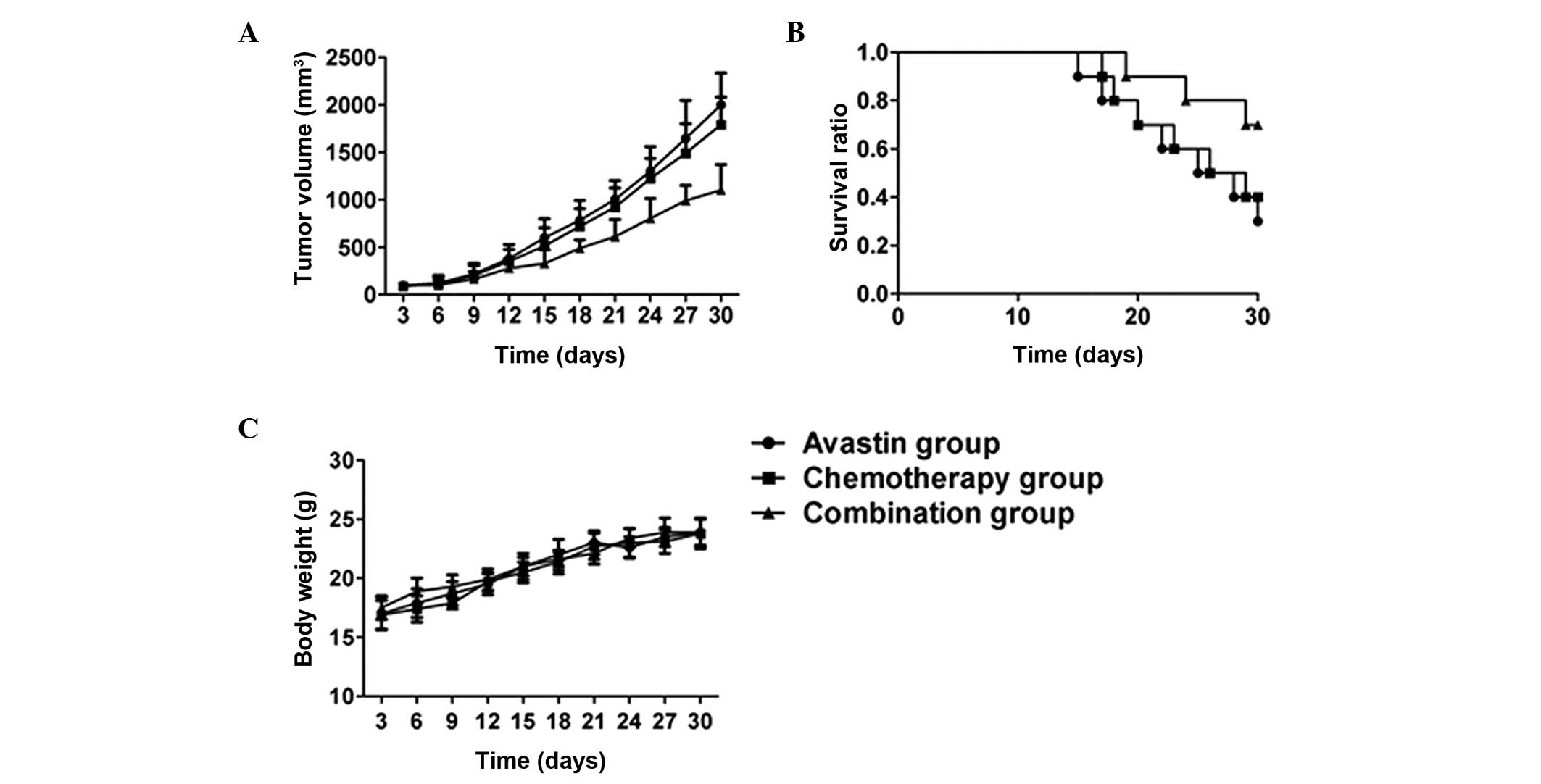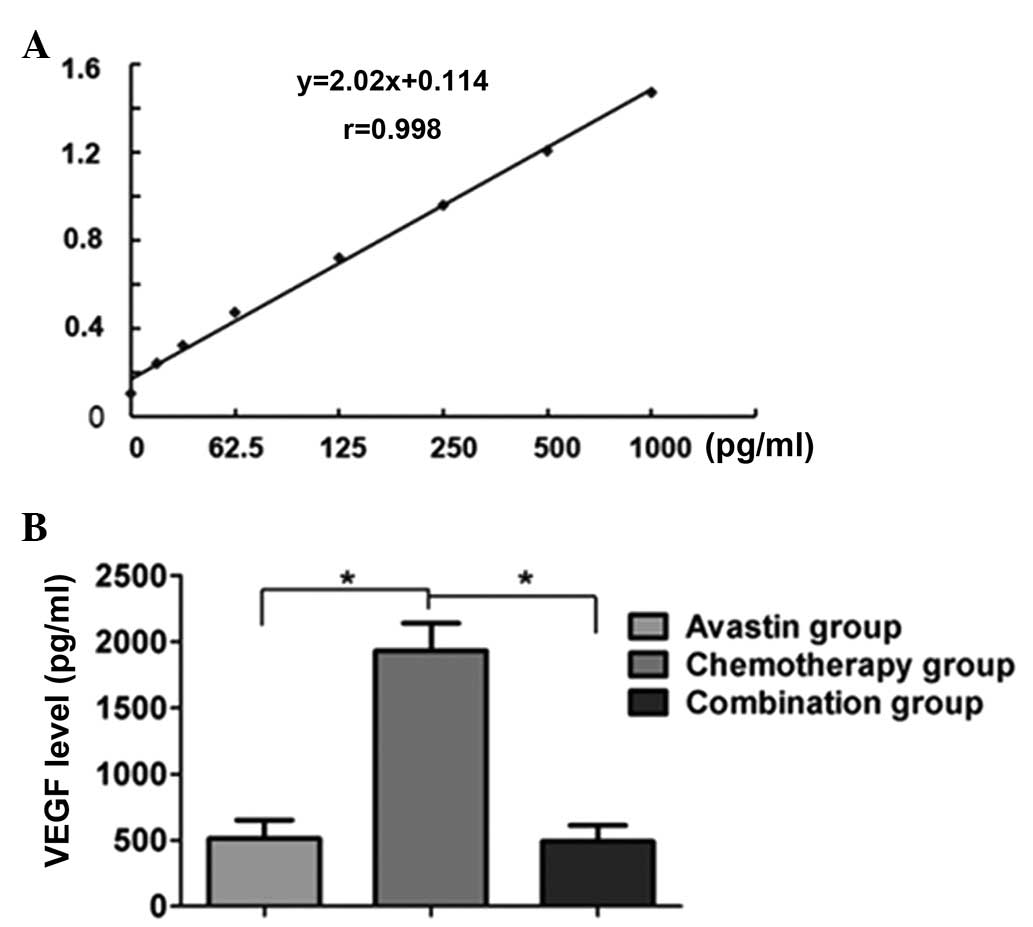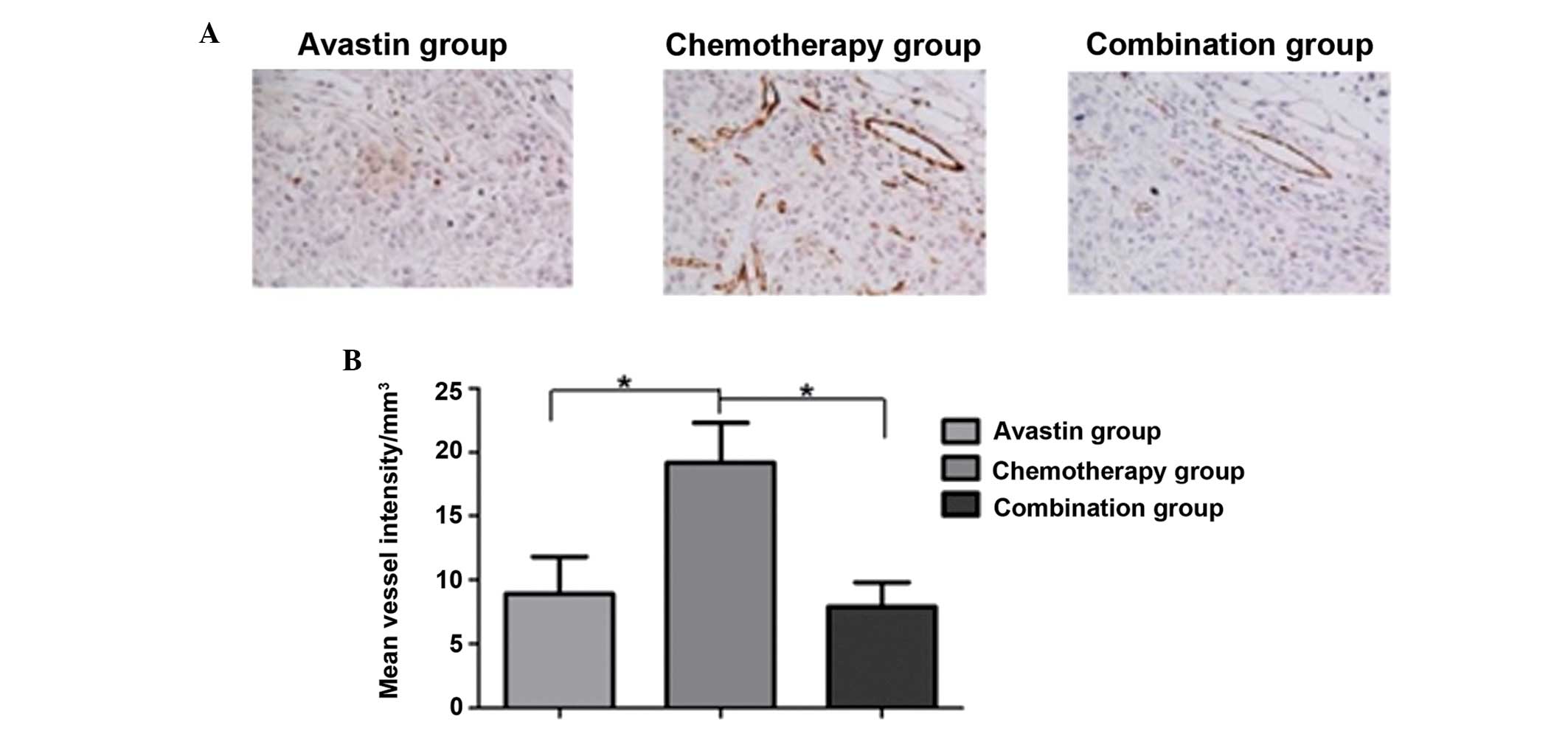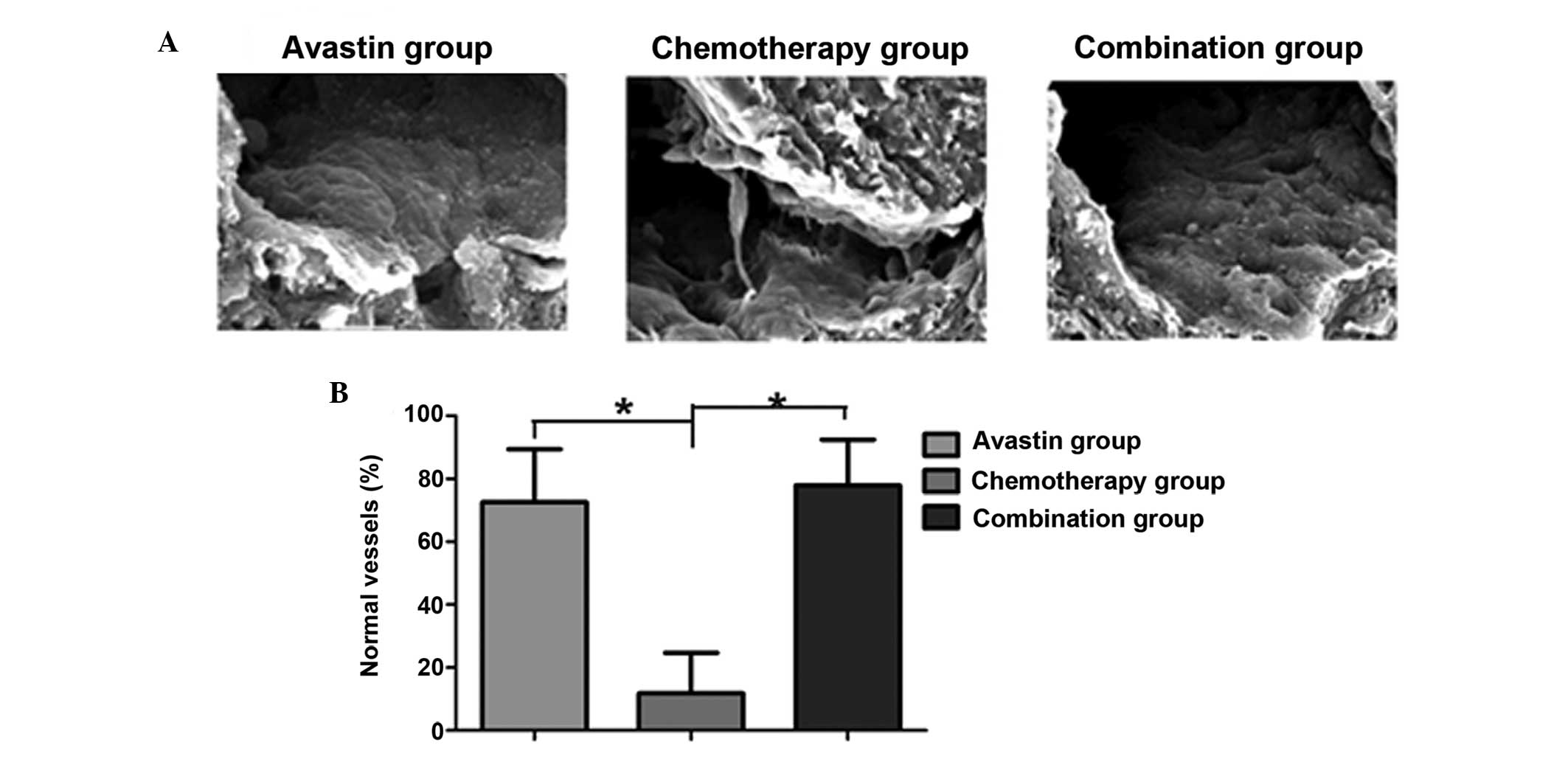|
1
|
Siegel R, Naishadham D and Jemal A: Cancer
statistics, 2012. CA Cancer J Clin. 62:10–29. 2012. View Article : Google Scholar : PubMed/NCBI
|
|
2
|
Goldstraw P, Ball D, Jett JR, Le Chevalier
T, Lim E, Nicholson AG and Shepherd FA: Non-small-cell lung cancer.
Lancet. 378:1727–1740. 2011. View Article : Google Scholar : PubMed/NCBI
|
|
3
|
Naim Younes R, Gross JL, Abrao FG and
Rodrigues Pereira J: Impact of adjuvant chemotherapy in completely
resected stage IIIA non-small cell lung cancer. Minerva Chir.
68:169–174. 2013.PubMed/NCBI
|
|
4
|
Reaume MN, Leighl NB, Mittmann N, et al:
Economic analysis of a randomized phase III trial of gemcitabine
plus vinorelbine compared with cisplatin plus vinorelbine or
cisplatin plus gemcitabine for advanced non-small-cell lung cancer
(Italian GEMVIN3/NCIC CTG BR14 trial). Lung Cancer. 82:115–120.
2013. View Article : Google Scholar : PubMed/NCBI
|
|
5
|
Arrieta O, Michel Ortega RM,
Villanueva-Rodríguez G, et al: Association of nutritional status
and serum albumin levels with development of toxicity in patients
with advanced non-small cell lung cancer treated with
paclitaxel-cisplatin chemotherapy: A prospective study. BMC Cancer.
10:502010. View Article : Google Scholar : PubMed/NCBI
|
|
6
|
De Falco S: Antiangiogenesis therapy: An
update after the first decade. Korean J Intern Med. 29:1–11. 2014.
View Article : Google Scholar : PubMed/NCBI
|
|
7
|
Dings RP, Loren M, Heun H, et al:
Scheduling of radiation with angiogenesis inhibitors anginex and
Avastin improves therapeutic outcome via vessel normalization. Clin
Cancer Res. 13:3395–3402. 2007. View Article : Google Scholar : PubMed/NCBI
|
|
8
|
Suzuki H, Hirashima T, Kobayashi M, et al:
Carboplatin plus paclitaxel in combination with bevacizumab for the
treatment of adenocarcinoma with interstitial lung diseases. Mol
Clin Oncol. 1:480–482. 2013.PubMed/NCBI
|
|
9
|
Tsimberidou AM, Adamopoulos AM, Ye Y, et
al: Phase I clinical trial of bendamustine and bevacizumab for
patients with advanced cancer. J Natl Compr Canc Netw. 12:194–203.
2014.PubMed/NCBI
|
|
10
|
Folkman J: Tumor angiogenesis: Therapeutic
implications. N Engl J Med. 285:1182–1186. 1971. View Article : Google Scholar : PubMed/NCBI
|
|
11
|
Dimova I, Popivanov G and Djonov V:
Angiogenesis in cancer - general pathways and their therapeutic
implications. J BUON. 19:15–21. 2014.PubMed/NCBI
|
|
12
|
Harper J and Moses MA: Molecular
regulation of tumor angiogenesis: Mechanisms and therapeutic
implications. EXS. 96:223–268. 2006.PubMed/NCBI
|
|
13
|
Adams RH and Alitalo K: Molecular
regulation of angiogenesis and lymphangiogenesis. Nat Rev Mol Cell
Biol. 8:464–478. 2007. View
Article : Google Scholar : PubMed/NCBI
|
|
14
|
Tunik S, Nergiz Y, Keklikci U and Akkus M:
The subconjunctival use of cetuximab and bevacizumab in inhibition
of corneal angiogenesis. Graefes Arch Clin Exp Ophthalmol.
250:1161–1167. 2012. View Article : Google Scholar : PubMed/NCBI
|
|
15
|
Keunen O, Johansson M, Oudin A, et al:
Anti-VEGF treatment reduces blood supply and increases tumor cell
invasion in glioblastoma. Proc Natl Acad Sci USA. 108:3749–3754.
2011. View Article : Google Scholar : PubMed/NCBI
|
|
16
|
Teicher BA: A systems approach to cancer
therapy. (Antioncogenics + standard cytotoxics → mechanism(s) of
interaction). Cancer Metastasis Rev. 15:247–272. 1996. View Article : Google Scholar : PubMed/NCBI
|
|
17
|
Wouters BG and Brown JM: Cells at
intermediate oxygen levels can be more important than the ‘hypoxic
fraction’ in determining tumor response to fractionated
radiotherapy. Radiat Res. 147:541–550. 1997. View Article : Google Scholar : PubMed/NCBI
|
|
18
|
Powathil GG, Adamson DJ and Chaplain MA:
Towards predicting the response of a solid tumour to chemotherapy
and radiotherapy treatments: Clinical insights from a computational
model. PLoS Comput Biol. 9:e10031202013. View Article : Google Scholar : PubMed/NCBI
|
|
19
|
Jain RK: Normalizing tumor vasculature
with anti-angiogenic therapy: A new paradigm for combination
therapy. Nat Med. 7:987–989. 2001. View Article : Google Scholar : PubMed/NCBI
|
|
20
|
Batchelor TT, Sorensen AG, di Tomaso E, et
al: AZD2171, a pan-VEGF receptor tyrosine kinase inhibitor,
normalizes tumor vasculature and alleviates edema in glioblastoma
patients. Cancer Cell. 11:83–95. 2007. View Article : Google Scholar : PubMed/NCBI
|
|
21
|
Hormigo A, Gutin PH and Rafii S: Tracking
normalization of brain tumor vasculature by magnetic imaging and
proangiogenic biomarkers. Cancer Cell. 11:6–8. 2007. View Article : Google Scholar : PubMed/NCBI
|
|
22
|
Sorensen AG, Batchelor TT, Zhang WT, et
al: A ‘vascular normalization index’ as potential mechanistic
biomarker to predict survival after a single dose of cediranib in
recurrent glioblastoma patients. Cancer Res. 69:5296–5300. 2009.
View Article : Google Scholar : PubMed/NCBI
|


















